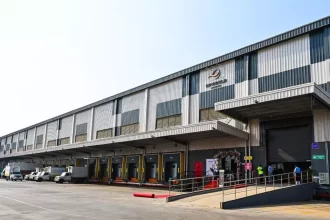In the increasingly global and interconnected marketplace, supply chains are the lifeblood of businesses. However, the challenges they face, from disruptions due to unforeseen events like pandemics, natural disasters, or political instability, to inefficiencies caused by lack of real-time communication, are immense. As industries grow, so do the risks involved in managing the supply chain. A resilient supply chain is essential for any business that wants to stay competitive, and this is where connectivity and communication play a pivotal role.
Why Connectivity Matters
The modern supply chain is not a linear, isolated process. It involves multiple stakeholders across the globe, including manufacturers, suppliers, logistics providers, and customers. Each of these players relies on seamless connectivity to ensure the smooth flow of information and materials. When even one link in the chain breaks down, the ripple effects can be felt throughout the entire network.
Connectivity ensures that information flows freely between these stakeholders, allowing for real-time visibility into every aspect of the supply chain. It means businesses can track their inventory levels, transportation statuses, and even demand fluctuations with precision. This type of visibility is essential in an environment where demand can shift rapidly, as companies need to be agile enough to respond effectively.
A lack of connectivity, on the other hand, can lead to bottlenecks, miscommunication, and delays, all of which can damage relationships with customers and partners. By implementing advanced connectivity solutions, such as Internet of Things (IoT) sensors and cloud-based platforms, businesses can ensure that their supply chain is operating efficiently and in real-time.
The Role of Communication
In addition to connectivity, effective communication between supply chain partners is crucial. Miscommunication, whether due to language barriers, differences in time zones, or outdated technology, can lead to delays and costly mistakes. For instance, failure to inform a supplier about a change in production schedules or delivery timelines can result in shortages or excess inventory, both of which can affect a company’s bottom line.
Clear and timely communication ensures that every stakeholder is aware of their responsibilities and can act accordingly. With advanced communication platforms, such as those offered by Magaya, companies can streamline their processes, improve collaboration, and make more informed decisions. Magaya’s solutions focus on enhancing collaboration by integrating all parts of the supply chain, including warehouses, transportation providers, and customs brokers, into a single platform. This eliminates communication silos and ensures that all stakeholders have access to the same information, enabling them to respond quickly to any changes or disruptions.
Resilience Through Proactive Strategies
Ultimately, supply chain disruptions cannot be entirely prevented, but they can be mitigated. By using connectivity and communication tools, companies can build a more resilient supply chain that can adapt to disruptions and maintain continuous operations. Proactive strategies, such as real-time monitoring and predictive analytics, allow companies to identify potential risks before they turn into significant problems.
Magaya’s platform is designed with this in mind, offering features like automated workflows, exception management, and real-time tracking. These tools help businesses maintain control over their supply chain, even when external factors threaten to cause disruptions.
Conclusion
In a world where supply chain disruptions are becoming increasingly common, companies need to adopt technologies that improve connectivity and communication. Solutions like those provided by Magaya empower businesses to maintain supply chain visibility, improve collaboration, and enhance overall operational efficiency. The future of supply chain management lies in the ability to connect and communicate across all levels, ensuring that businesses remain resilient in the face of adversity.
By embracing these tools, companies can not only avoid disruptions but also gain a competitive edge, ensuring long-term growth and success in the global market.







